/futures aug 2 '17
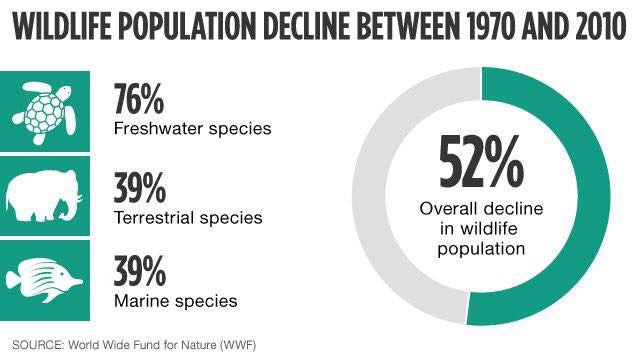

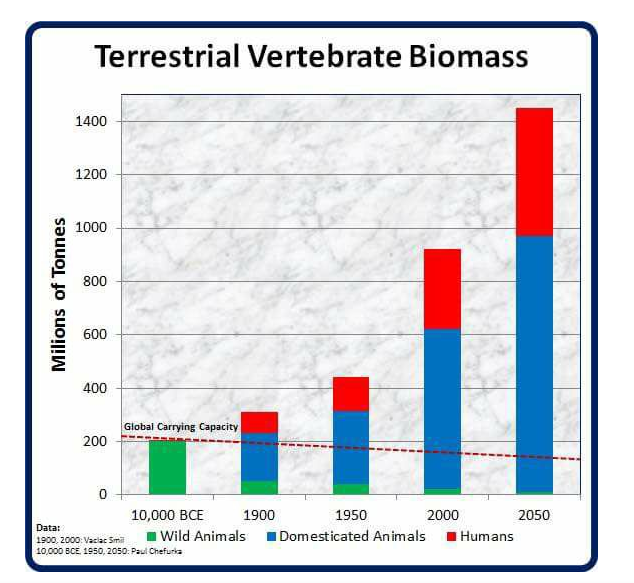
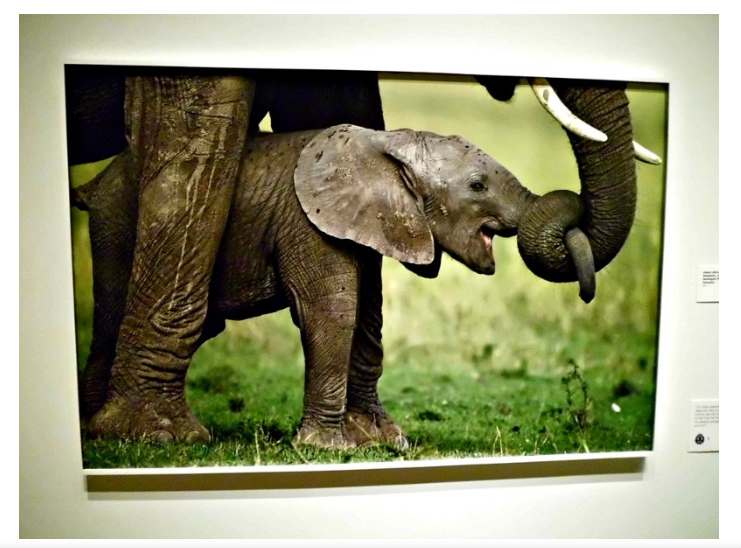
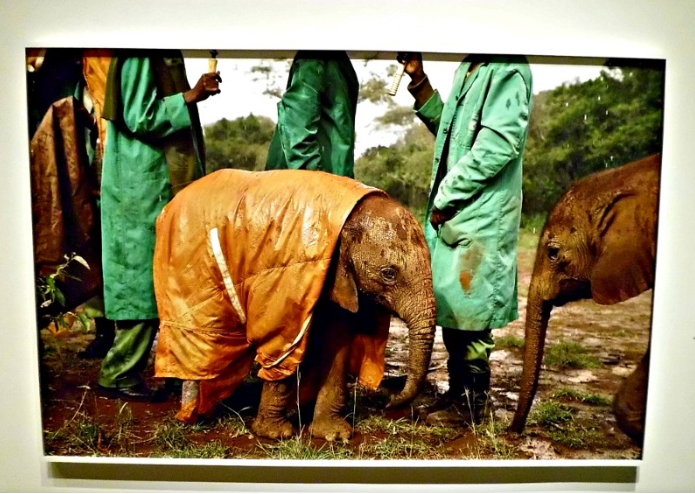
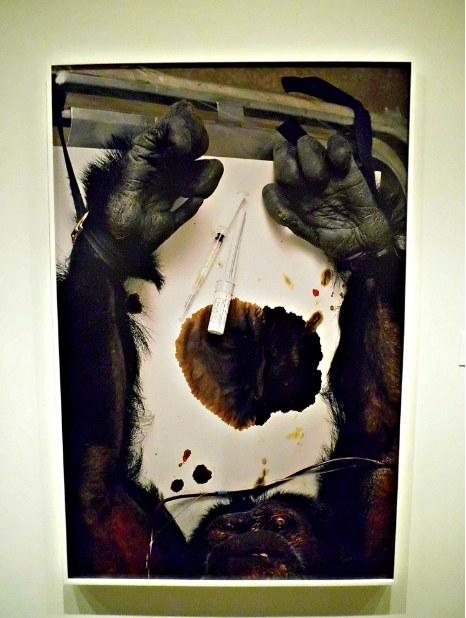
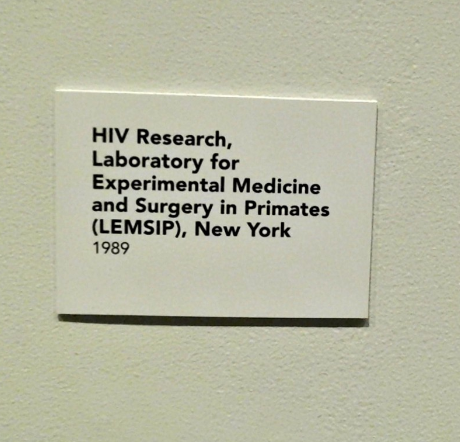
Award winning photographer Michael Nichols’ exhibit at the Philadelphia Museum of Art appears to be the culmination of a very distinguished career. Over the past thirty years he has documented the wonders, struggles, and challenges of the wilderness and has been a strong advocate for the preservation of wild spaces. This exhibition could not be more timely and relevant.
The scale of environmental destruction and the precariousness of our continued existence on this planet is slowly beginning to dawn even on those committed to willful ignorance. This article will explore why things like the ‘Wild’ exhibit are valuable and necessary; we’ll also explore what must be done to move the concept of wilderness from its position as a far off abstraction to one that has a very real and immediate relevance for our collective survival. Spoiler: if the wilderness dies, we die. It’s pretty much that simple.
Let’s first define what is meant here by “the wilderness.” The wilderness is generally any area that is not under the direct or indirect control of human beings. These places are in a relatively pristine state and non-humans are the majority. When most people think of the wild they might conjure up an image of the tropical rain forest or of African grasslands, yet the ice caps of Antarctica and the North Pole are also wild places as are most of the oceans. And when we consider ice caps and their role in making human society possible, we can understand that protecting the wilderness is also a form of self preservation.
Most of us live with a chasm like distance between ourselves and deep, meaningful and reciprocal relationships with nature, yet the dire state of the natural world is nevertheless becomingly increasingly harder and harder to ignore. This speaks to the seriousness of the crisis. Some were shocked out of their complacency when they saw a recent New York Times article use the ominous sounding term ‘biological annihilation’ to describe human society’s effect on the natural world:
The study, published Monday in the Proceedings of the National Academy of Sciences, calls the current decline in animal populations a “global epidemic” and part of the “ongoing sixth mass extinction” caused in large measure by human destruction of animal habitats. The previous five extinctions were caused by natural phenomena…
Dr. Ceballos emphasized that he and his co-authors, Paul R. Ehrlich and Rodolfo Dirzo, both professors at Stanford University, are not alarmists, but are using scientific data to back up their assertions that significant population decline and possible mass extinction of species all over the world may be imminent, and that both have been underestimated by many other scientists.
The situation is indeed extreme and dire, with over half of all wildlife exterminated within only the past 40-50 years.
The scale of environmental destruction and the precariousness of our continued existence on this planet is slowly beginning to dawn even on those committed to willful ignorance. This article will explore why things like the ‘Wild’ exhibit are valuable and necessary; we’ll also explore what must be done to move the concept of wilderness from its position as a far off abstraction to one that has a very real and immediate relevance for our collective survival. Spoiler: if the wilderness dies, we die. It’s pretty much that simple.
Let’s first define what is meant here by “the wilderness.” The wilderness is generally any area that is not under the direct or indirect control of human beings. These places are in a relatively pristine state and non-humans are the majority. When most people think of the wild they might conjure up an image of the tropical rain forest or of African grasslands, yet the ice caps of Antarctica and the North Pole are also wild places as are most of the oceans. And when we consider ice caps and their role in making human society possible, we can understand that protecting the wilderness is also a form of self preservation.
Most of us live with a chasm like distance between ourselves and deep, meaningful and reciprocal relationships with nature, yet the dire state of the natural world is nevertheless becomingly increasingly harder and harder to ignore. This speaks to the seriousness of the crisis. Some were shocked out of their complacency when they saw a recent New York Times article use the ominous sounding term ‘biological annihilation’ to describe human society’s effect on the natural world:
The study, published Monday in the Proceedings of the National Academy of Sciences, calls the current decline in animal populations a “global epidemic” and part of the “ongoing sixth mass extinction” caused in large measure by human destruction of animal habitats. The previous five extinctions were caused by natural phenomena…
Dr. Ceballos emphasized that he and his co-authors, Paul R. Ehrlich and Rodolfo Dirzo, both professors at Stanford University, are not alarmists, but are using scientific data to back up their assertions that significant population decline and possible mass extinction of species all over the world may be imminent, and that both have been underestimated by many other scientists.
The situation is indeed extreme and dire, with over half of all wildlife exterminated within only the past 40-50 years.

Yet even this shocking statistic hides the true scope of human impacts on the wilderness and wild places.

From the above graph we can see that since the dawn of human civilization, human beings, our livestock and our pets have totally displaced wild animal populations.

The situation completely exploded out of control towards the end of the 19th century. The era of European colonialism culminated in the acceleration and global spread of capitalism, industrialization, and a much more explicit commodification of living beings. Now we’re seeing species extinctions at 1,000 times the natural rate, meaning that industrial society has quite literally become a death machine for wild animals and their habitats.
One interesting aspect of the ‘Wild’ exhibit is that it did not attempt to gloss over the shocking effects humans are having on the natural world. Of course there were plenty of cute pictures like this:
One interesting aspect of the ‘Wild’ exhibit is that it did not attempt to gloss over the shocking effects humans are having on the natural world. Of course there were plenty of cute pictures like this:

And yet there were also a few very necessary juxtapositions:

Deprived of their mothers warmth and care, baby elephants are susceptible to pneumonia hence the orange coverall. The ivory trade has pushed elephants to the brink of extinction:
A hundred years ago there were 10m elephants roaming the continent. By the mid-1970s that number had collapsed to 1.3m. So had the elephants’ range, with herds restricted to ever-smaller pockets of land in ever-fewer countries. Today, there are 400,000 [African] elephants left, roughly a third of them squeezed into one relatively safe haven, Botswana.
Directly across from the picture of these forlorn babies was an ornate chair and footstool, both adorned with and partially made of ivory. They gave the impression of being quite expensive and it brought to mind the reality of how the environmental crisis has largely been driven by the appetites and callousness of those with the power and resources to turn nature into their own personal piggy banks.
Another section of the exhibit that was very effective was the corridor featuring primates. Most were photographed as they lived in their natural habitats along with some explanations of how difficult it was to gain access to these elusive beings. Others were shown after they had fallen into the clutches of our modern and scientifically advanced society:
A hundred years ago there were 10m elephants roaming the continent. By the mid-1970s that number had collapsed to 1.3m. So had the elephants’ range, with herds restricted to ever-smaller pockets of land in ever-fewer countries. Today, there are 400,000 [African] elephants left, roughly a third of them squeezed into one relatively safe haven, Botswana.
Directly across from the picture of these forlorn babies was an ornate chair and footstool, both adorned with and partially made of ivory. They gave the impression of being quite expensive and it brought to mind the reality of how the environmental crisis has largely been driven by the appetites and callousness of those with the power and resources to turn nature into their own personal piggy banks.
Another section of the exhibit that was very effective was the corridor featuring primates. Most were photographed as they lived in their natural habitats along with some explanations of how difficult it was to gain access to these elusive beings. Others were shown after they had fallen into the clutches of our modern and scientifically advanced society:

Notice the hands tied at the wrist to the table.

The fact that this primate was being tortured for the sake of HIV research is of course meant to unsettle the viewer and provoke the asking of some difficult questions. Considering how HIV was unleashed on the world in large part because of human encroachment on primate habitats, there was a layer of bitter irony here that may or may not have been intentional. It was unclear what was more disturbing, that such brutal suffering was the price of advancement in human medicine, or that many would find the price to be worth it because obviously a human life is worth more than a primate’s. This more than any other part of the exhibit revealed in its stark nakedness the vampire-like relationship between human society and the natural world.
Dr. Layla AbdelRahim is an anthropologist, philosopher and author based in Montreal who has written extensively on the subject of wilderness and our relationship to it. She recently gave an interview where she discussed her own unique perspective on a concept known as “rewilding,” and how this could be a possible solution to the environmental crisis. Rather than continuing the ghastly vampire-like relationship we currently have with nature, she says that we must begin to foster reciprocal relationships with the natural world built on a rejection of human supremacy.
“Once we start understanding the economic input and output, the extraction and consumption that is behind everything we take for granted, this is where the epistemic revolution will take place…What do [we] give back to that wild community? Do [we] allow it to exist for its own purpose, to simply enjoy life — not for [our] pleasure and not for [our] profit?”
She then goes on to talk about how this concept of rewilding could work on a practical level, and that we should —
“…give people a spot that they will rewild and open up to the growth of plant diversity, food diversity for non humans and humans alike.”
This idea of opening up space for the diversity of nature to flourish is crucial, and it is also what our own survival depends upon. Fossil fuel exploration, mining, and other extraction projects that destroy natural habitats must come to an end. The dumping of waste into the oceans and the over-fishing of the oceans must come to an end. The destruction of rain forests and grasslands for agriculture must come to an end. We must also find ways to mitigate the CO2 pollution that is literally eating away at our planet’s refrigeration systems at the north and south poles. Rewilding, creating spaces for the wilderness to heal and flourish, is about much more than respecting nature — it’s about understanding that the fates of all living beings on this planet are intertwined. We will not be able to destroy the natural world and then carry on with our technologically advanced society like nothing ever happened.
In conclusion, what felt most important about the ‘Wild’ exhibition is that it used a prestigious, mainstream platform (the Philadelphia Museum of Art) to reveal the scope of the crisis in a way that managed to seamlessly blend art and activism. The undeniable activist undercurrent behind this major exhibition felt unusual for a traditionally conservative institution known to shy away from politics and current affairs. We need much more of this if we’re to have anything resembling a solution to the environmental crisis. Our institutions, especially those that engage with the public, must become strong environmental advocates even if they do not consider themselves to be in the “business” of environmental advocacy— our survival as a species may depend upon it.
Written by Ron Whyte, originally published by Medium on July 30, 2017
Link to article here
Dr. Layla AbdelRahim is an anthropologist, philosopher and author based in Montreal who has written extensively on the subject of wilderness and our relationship to it. She recently gave an interview where she discussed her own unique perspective on a concept known as “rewilding,” and how this could be a possible solution to the environmental crisis. Rather than continuing the ghastly vampire-like relationship we currently have with nature, she says that we must begin to foster reciprocal relationships with the natural world built on a rejection of human supremacy.
“Once we start understanding the economic input and output, the extraction and consumption that is behind everything we take for granted, this is where the epistemic revolution will take place…What do [we] give back to that wild community? Do [we] allow it to exist for its own purpose, to simply enjoy life — not for [our] pleasure and not for [our] profit?”
She then goes on to talk about how this concept of rewilding could work on a practical level, and that we should —
“…give people a spot that they will rewild and open up to the growth of plant diversity, food diversity for non humans and humans alike.”
This idea of opening up space for the diversity of nature to flourish is crucial, and it is also what our own survival depends upon. Fossil fuel exploration, mining, and other extraction projects that destroy natural habitats must come to an end. The dumping of waste into the oceans and the over-fishing of the oceans must come to an end. The destruction of rain forests and grasslands for agriculture must come to an end. We must also find ways to mitigate the CO2 pollution that is literally eating away at our planet’s refrigeration systems at the north and south poles. Rewilding, creating spaces for the wilderness to heal and flourish, is about much more than respecting nature — it’s about understanding that the fates of all living beings on this planet are intertwined. We will not be able to destroy the natural world and then carry on with our technologically advanced society like nothing ever happened.
In conclusion, what felt most important about the ‘Wild’ exhibition is that it used a prestigious, mainstream platform (the Philadelphia Museum of Art) to reveal the scope of the crisis in a way that managed to seamlessly blend art and activism. The undeniable activist undercurrent behind this major exhibition felt unusual for a traditionally conservative institution known to shy away from politics and current affairs. We need much more of this if we’re to have anything resembling a solution to the environmental crisis. Our institutions, especially those that engage with the public, must become strong environmental advocates even if they do not consider themselves to be in the “business” of environmental advocacy— our survival as a species may depend upon it.
Written by Ron Whyte, originally published by Medium on July 30, 2017
Link to article here